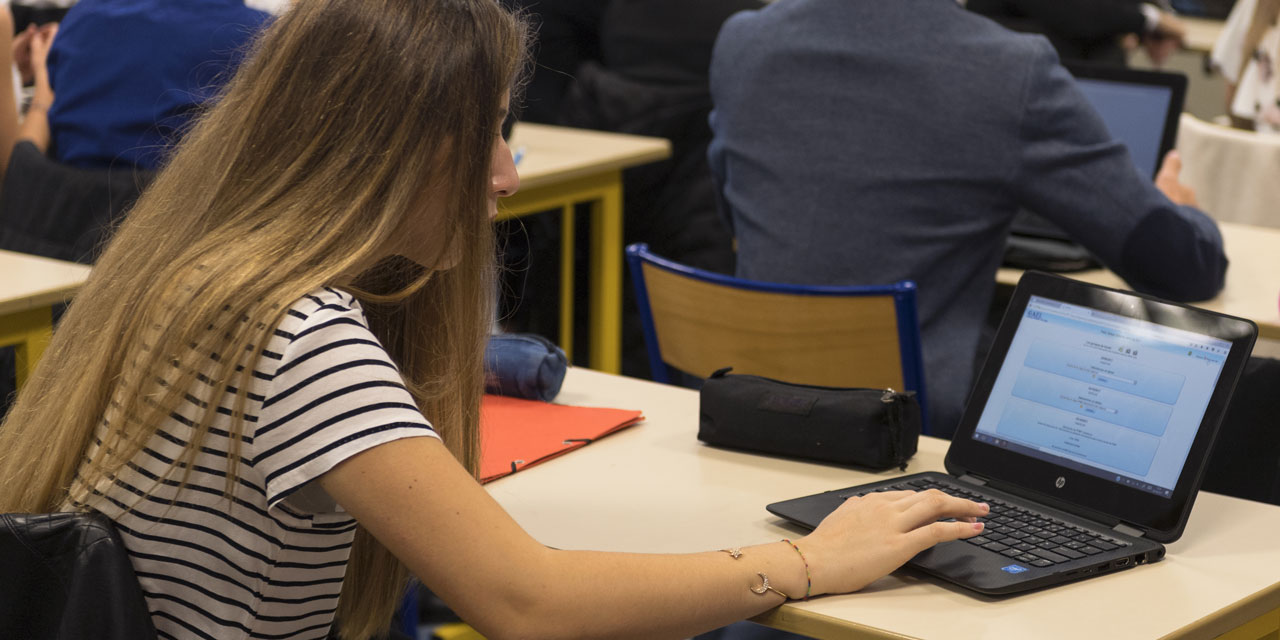INVESTIGATION
Will the computer have the skin of the textbook? On the occasion of this return, all (or almost) students in the Grand-Est is in any case equipped with a laptop PC offered by the region ... 115,000 machines. In Mulhouse, Europe 1 went to question the various actors of this great upheaval.
"The screen is super big, no problem to read"
Side schoolboy, the reception is obviously positive when opening the box. "It's super cool, it's nice, we do not need to buy one, and more is nine," enthuses a student. "In addition the screen is super large, we will have no problem to read," adds another. Especially "cool" after the baccalaureate, each high school student can keep his computer - at a cost of 40 million euros for the region.
In practice, teachers and students use these computers for educational purposes, instead of paper textbooks. No more, then, the big books in the backpack. And hello to applications, which depend a little on publishers: depending on whether you are at Bordas, Nathan or other, we go from the PDF a little improved, simple digital version of the one that existed on the paper, to more advanced things, like MCQs, tests or videos. What energize learning, making high school students a little more "actors" during classes.
"My neighbor bought a pair of shoes on the internet"
But to operate these new equipment, the entire school had to be equipped with wifi, with drifts that may involve. "I remember that we had to do exercises that were given to us on the tablet directly, and suddenly I had my headphones .... I was watching a series with a dog, I was laughing well but I was trying to do not laugh too much to be too burnt, "tells Europe 1 a student of the institution, where PCs are experienced for a year. "My classmate, two days ago, he bought a pair of shoes on the internet," slips a high school girl. "Yes, it's really dissipating, it's clear."
So, teachers have become master in the art of counter-strategies: tracking students reading subtitles Netflix series, going to the bottom of the class to see the screens ... In Strasbourg, a high school even offers software special: on the teacher's computer, a mosaic displays all the screens of the students in the class.
"It's a captivating tool, there is light"
Once the "cyber-vagrancy" almost content, the teachers adapt with more or less reserves. "It is, I think, illusory to hope to have all the attention of students while they have a screen in front of them," laments Patrice, teacher in Mulhouse. "It's a captivating tool, there is light, we explain something and three minutes later they ask a question that does not make sense because it was explained but they did not listen they did not hear it. "
Most often, according to the teachers, the solution is to keep a good old notebook for class note-taking, and to get the computers out just for the exercises. This allows both to hold the class and to arrive at the end of the day with a reasonable screen time. No solution, on the other hand, for the nostalgic of the manuals of our childhood, which indicated the quantity of knowledge to be swallowed according to the number of remaining pages: with the numerical manuals, there is neither beginning nor end.
What a little to lose the students, in the middle of pages to scroll on the screen, links and videos ... Without that they do not lose the sense of good excuses: You knew the student who has forgotten his textbook? And now there is one who has no battery.

